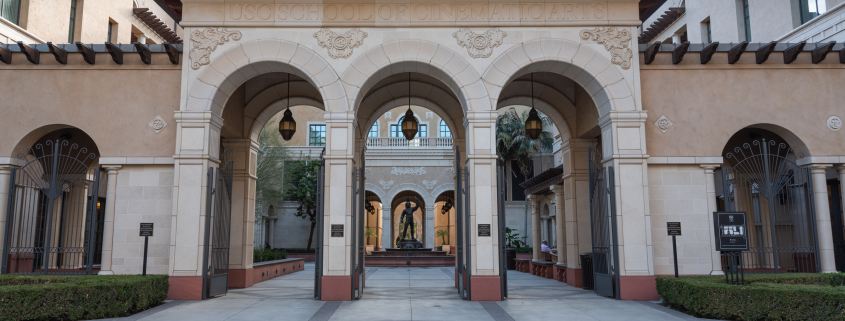Project captures Latinx stories during the pandemic

“Voces of a Pandemic” was born out of the need to record the experiences of Latinx communities in the United States during the coronavirus pandemic. The project started in Spring 2020 and, so far, more than 300 interviews have been conducted across the country, said Maggie Rivas-Rodríguez, the director of Voces Oral History Center.
The project was started by the Voces Oral History Center at the University of Texas at Austin and included 12 institutions including UCLA’s Labor Studies Center and Fundación Luis Muñoz Marín. When USC professor Laura Isabel Serna found out about the project, she knew she wanted to collaborate on it.
“Given where USC is and the way that COVID-19 affected Latinos in California, it was really important to contribute [to the project] from USC,” Serna said.
As the pandemic unfolded, the media “focused on people who are working from home,” Serna said. This focus excluded many Latinx people, as a large population of Latinx people worked in industries that required in-person activities, such as farming, meat packing, delivery services and custodial services.
“It seemed really important to capture [Latinx] experiences as well,” Serna said. “When historians or other scholars go back to look at what happened, they also have evidence about what that experience was like for people who were poor, who had to work, who were not part of this white working class that got to go home and do everything on Zoom.”
According to Rivas-Rodríguez, the pandemic affected Latinx people in particular because they often do not have insurance, which caused them to avoid going to the doctor when they were sick. More individuals got sick as a result, and without access to healthcare, their conditions worsened. This situation was aggravated because many Latinx people live in multi-generational households, Rivas-Rodríguez said. This means that older people, who are high-risk patients, lived with younger people, who may have gotten infected at work, for example.
Another way the pandemic has affected Latinx communities greatly is in their ability to grieve. The impact on people’s wellbeing with not being able to gather and say goodbye to those who have died is something that we have not processed yet as a society, Serna said.
While many of these communities struggled in similar ways, they also faced their own individual struggles. For those who are religiously conservative, many protested against the closing of churches and anti-vaccine ideologies, Serna said.
Other differences in the problems faced during the pandemic were the result of local governments’ responses. At the beginning of the pandemic, Puerto Rico’s government implemented lockdowns and mask mandates. But, despite implementing early precautions, the pandemic worsened the economic situation on the island. Even before the pandemic, the economic situation was fragile because of the natural disasters that affected the island for the past years and government corruption. Many businesses were too affected to reopen after the lockdown, said Silvia Álvarez Curbelo, who oversees the portion of the project that was made in Puerto Rico.
The differences in backgrounds and lived experiences for Latinx people are what make the “Voces of a Pandemic” project so rich. Every person that is interviewed tells their own story, Rivas-Rodríguez said.
“I think it’s important to just look at the texture of all of these different interviews and not try to shoehorn them into any one kind of category,” Rivas-Rodríguez said.
A story that particularly struck Rivas-Rodríguez was one of a man whose father died at the beginning of the pandemic.
“He wanted to do this interview because he wanted it understood that his father was more than a number,” Rivas-Rodríguez said. “I think that’s part of the importance of these oral history interviews … What we’re trying to do is put a face on those stories and put a name to them and say these are people that had families. They had dreams. They weren’t ready to go.’’
With the pandemic, one of the biggest challenges has been finding funding to hire people to help in the project, Rivas-Rodríguez said. This includes finding more interviewers as well as people to keep a record of the interviews done in each institution. Despite this, Rivas-Rodríguez said she would like to conduct more interviews in specific areas, especially Latinx news and media.
“In communities all over the country, there are small newspapers that are produced as labors of love, and people just pour their hearts and souls into these things,” Rivas-Rodríguez said. “They don’t make much money. When the pandemic hit, their advertising just dried up … So I think that’s one area that I really, really want us to look at.”
One thing Serna wants people to take away from “Voces of a Pandemic” is that “the really diverse experiences of Latino communities across the U.S. deserve to be recorded and remembered and made part of the public record.”

